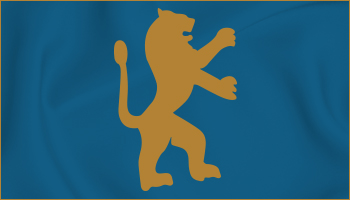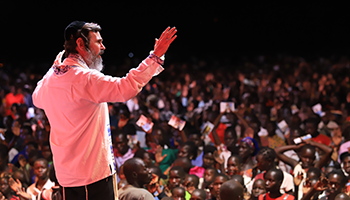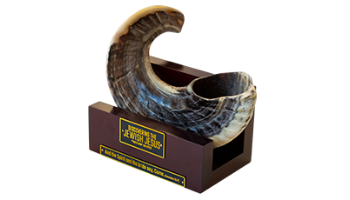Rabbi, thank you for boldly proclaiming truth!
I am so happy that I have found Jesus again!
I wanted you to know, I am now a Lover of Jesus Christ
My 7 year old son Jacob watches your show with me every week.
You always seemed to know what I needed when I needed it
Receive Rabbi's Seeds of Revelation - a weekly video "Power Minute", Crusade Prayer Alerts, Ministry News and Updates.
Get a Weekly Faith-Boost
You can complete your gift and support our mission in as little as ten minutes. FreeWill‘s free online tool walks you through the process step-by-step.
If you’ve donated stock previously and are familiar with the process, access Discovering The Jewish Jesus‘s brokerage and DTC information.
Are you a financial advisor working on behalf of your philanthropic client? Use this tool to request a securities transfer on behalf of your clients.
Thanks to our partnership with FreeWill, you can make your QCD gift quickly and hassle-free by beginning your forms online.
Print out blank forms to complete by hand, or transact the gift over the phone with your financial custodian.
| Networks | Monday | Tuesday | Wednesday | Thursday | Friday | Saturday | Sunday |
|---|---|---|---|---|---|---|---|
| WEWS (ABC) – Cleveland, OH | 5:30AM 11:00AM |
||||||
| WQIZ – Cleveland, OH | 1:00AM | 7:30AM | |||||
| COACB (WOCB, WXCB & WGCT) – Columbus, OH | 1:00AM | 7:30AM | |||||
| WTTE (WSYX-D3) – Columbus, OH | 5:00AM | ||||||
| WZTV FOX – Nashville, TN | 10:30PM | ||||||
| KSCE – El Paso, TX | 10:00AM | 7:00PM | 5:30PM | ||||
| WCWF CW – Green Bay, WI | 8:30AM CT |
This is an necessary category.
This is an non-necessary category.





